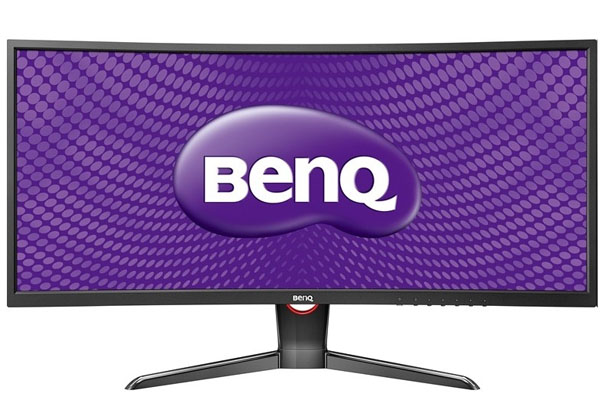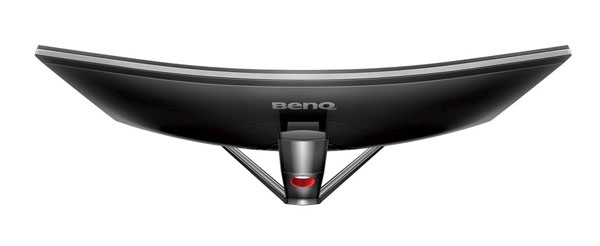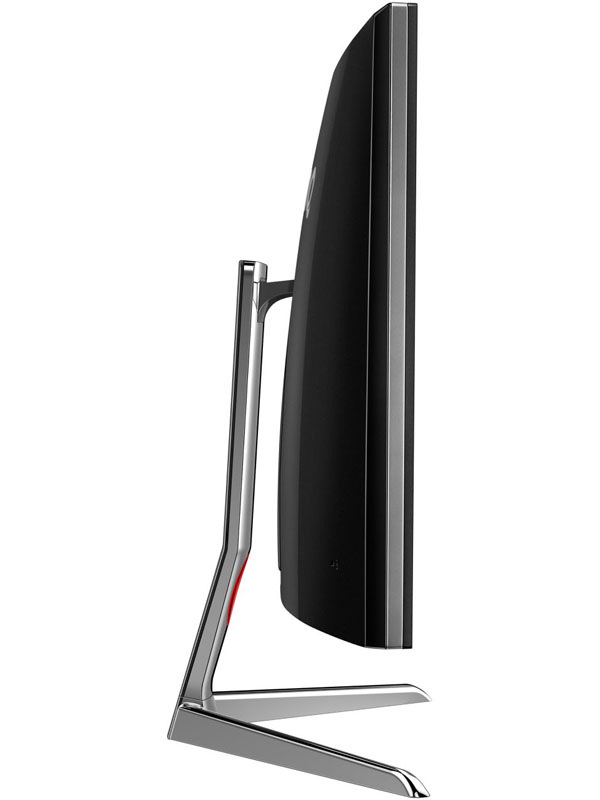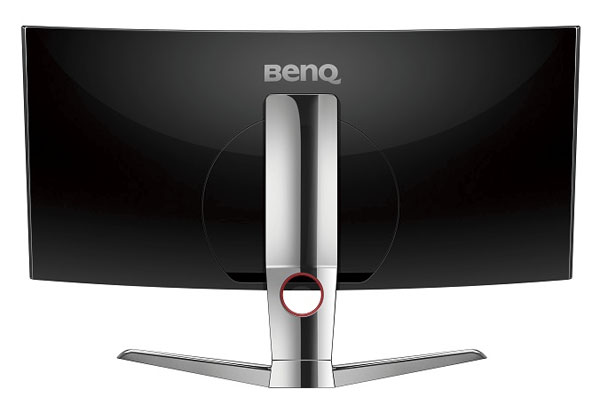BenQ XR3501 35-Inch Curved Monitor Review
BenQ's XR3051 high-contrast AMVA panel offers an impressive 2000R curvature and a 144Hz refresh rate along with some very unique attributes.
Why you can trust Tom's Hardware
Packaging, Physical Layout And Accessories
The XR3501 comes in BenQ's usual hefty carton that opens like a normal box. This makes removing panel a lift-out proposition rather than the slide-out procedure required by suitcase boxes. The panel itself is already assembled with the stand and upright and its curvature is well-protected by rigid Styrofoam.
The accessories include an external power brick and cables for HDMI, DisplayPort and analog audio. There was no CD-ROM in the box with a manual nor is a printed one in evidence. We were also unable to find one on BenQ's website. Hopefully that oversight will have been rectified by the time you read this.
Product 360
Once you get past the impressive size of the XR3501 you'll notice BenQ's usual solid build quality. The base is a single cast metal piece with dark chrome plating. The upright is plastic but equally solid and attaches firmly to the panel. There is only a tilt adjustment but that movement is very firm and feels secure.
The anti-glare layer allows for excellent image clarity while cutting down reflections effectively. With a screen this big and a curve so prominent, you might think it would pick up light easily, but it doesn't. The bezel is very thin at the sides and top so if you wish to line up two or three XR3501s, the separation line will be very narrow. While this is an expensive proposition, the 2000R curvature means that three monitors will create a true wrap-around experience.
The curve on the XR3501 can be easily seen from any angle, but the top really shows you how much bend there is. It's enough that you'll see it in on-screen windows or any object with a horizontal edge. It takes a little getting-used to but during gameplay, it really enhances the sense of immersion.
Thinness is not something you'll get with any curved screen but the XR3501 is no thicker than it needs to be. By omitting an internal power supply the chassis remains smoothly tapered in both the horizontal and vertical dimensions. If you're looking for USB ports, there are none on either side. Speakers are also absent, though you get a headphone jack along with a mic input and a line-out connection on the bottom panel.
This photo shows the input cover in place; it only leaves a small slit for cables to exit. The rest of the chassis is free of vents and decals. Only a BenQ logo adorns the otherwise featureless back panel. The upright is plastic but it's plated with the same dark chrome as the base creating a high-end appearance and feel. You can also see a red-trimmed hole for cable management. If you want to wall-mount the XR3501, BenQ sells a kit that adds a 100mm VESA mount.
Get Tom's Hardware's best news and in-depth reviews, straight to your inbox.
The input panel faces down and is very recessed towards the panel's front face. This makes cable insertion somewhat difficult. If your DisplayPort cable has a fat connector, you'll have a hard time getting it plugged in. From the left we have power, two HDMI ports, two DisplayPorts (one mini), analog line in and line out and a headphone jack. It's important to note that the HDMI inputs will support 2560x1080 resolution but only at 60Hz. If you want to run at 144Hz, you'll have to use DisplayPort.
Current page: Packaging, Physical Layout And Accessories
Prev Page Introduction Next Page OSD Setup And Calibration
Christian Eberle is a Contributing Editor for Tom's Hardware US. He's a veteran reviewer of A/V equipment, specializing in monitors. Christian began his obsession with tech when he built his first PC in 1991, a 286 running DOS 3.0 at a blazing 12MHz. In 2006, he undertook training from the Imaging Science Foundation in video calibration and testing and thus started a passion for precise imaging that persists to this day. He is also a professional musician with a degree from the New England Conservatory as a classical bassoonist which he used to good effect as a performer with the West Point Army Band from 1987 to 2013. He enjoys watching movies and listening to high-end audio in his custom-built home theater and can be seen riding trails near his home on a race-ready ICE VTX recumbent trike. Christian enjoys the endless summer in Florida where he lives with his wife and Chihuahua and plays with orchestras around the state.
-
Soul_keeper Everytime I see these display news/reviews I look for the power usage numbers and end up having to google for them.Reply
Can you start adding the power usage to the specs tables ?
thanks -
iam2thecrowe ReplyEverytime I see these display news/reviews I look for the power usage numbers and end up having to google for them.
I don't know, I have never looked at power usage specs when deciding which monitor to buy. Ever. It is expensive for only 1080 vertical pixels though. Would rather settle for a 60hz model with 1440 for a similar price.
Can you start adding the power usage to the specs tables ?
thanks -
rajeshgoblet 'The other curved displays we've seen sport a 3800R curvature, which means a radius of 3000 millimeters.' i think its a little bit typo. 3000 should be 3800 milimeters.Reply -
Shankovich Seems pretty good. Don't mean to sound like a whiner but for $1000 I would expect 10 bit colour on it. Then again loving that 144 Hz, can't complain about anything else really.Reply -
Realist9 1080p at 35 inches. No. 5 years ago? Maybe. Today? No.Reply
And someone dropping $1000 on their monitor is very unlikely to have a sub $300 video card.
No excuses. This should have been at least 1440p. I was excited until I saw that. -
eklipz330 this is clearly an attempt at milking the market. next year they will have a 1440p variant, and the year after they will finally incorporate freesync/gsync.Reply
they could have at least made it 1200p




